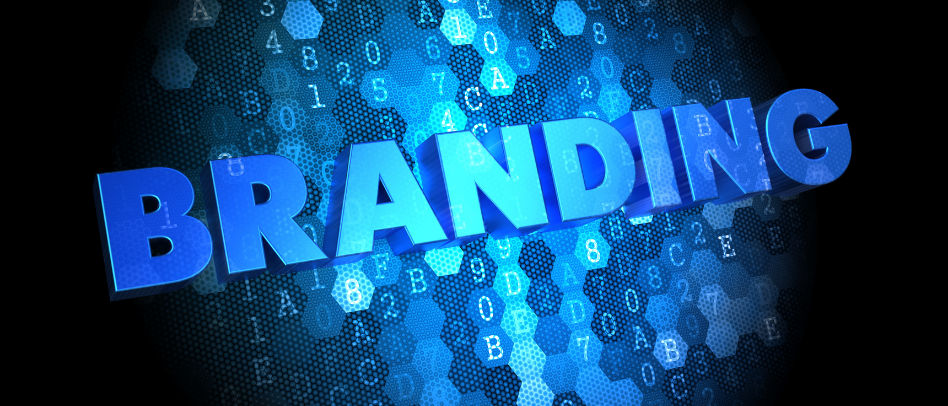It Always Starts with Branding.
It is no surprise that I am perpetually extolling the value of great branding. This goes beyond a fabulous logo and to the heart of what we do each day to create a connection with guests, team members, and other stakeholders.
Knowing who you are and what you care about is only one side of the branding equation. The other is what your target audience can expect from you and why they should do business or work with you.
Then, all these variables must somehow be distilled down to a singular essence that people will remember and continuously associate with you. We see evidence of this focused branding all around us, from the golden arches of McDonald’s (admit it, you just heard that jingle) to the sound that signals the start of the latest episode of Law and Order, the melodic sounds of “mmm mmm good” or the smiling face at your local Chick-fil-A.
Your brand is how the outside world sees your company.
Your branding is the creation of a unique brand.
Your brand identity feeds into your branding.
We’ve talked about how to go through the process of developing your brand. There were days when this was some of the most challenging work to do because it meant digging into our culture in ways that did not make us happy as marketers, but now we’ve got to do this all in a much smaller yet broader medium.
Now our customers are online, and we need to convert that branding to a space often no larger than the palm of your hand.
What Is Digital Branding?
Combining your website and social media postings, user reviews, and how you manage your online presence results in your digital branding. Simply put, it is how you present your brand online.
Effectively done, digital branding allows you to build an emotionally powerful presence online. However, understanding the difference between digital marketing and digital branding can often be confusing.
Simply put, digital marketing is how we identify customers to purchase from us. Digital branding stimulates recognition and inspires loyalty.
Why Does Digital Branding Matter?
We are all seemingly attached to our devices. Studies vary, but one thing is common, over half of American adults exhibit symptoms of nomophobia, the fear of not having their phone or enough battery life. The thing that used to be a mere irritant is now a recognized condition!
Most of us engage with the world through the lens of the internet, which makes it essential for brands to understand the importance of digital marketing AND branding. Both efforts allow brands to create a presence anywhere — even in the palm of your hand.
Digital branding opens a communication channel with prospective and known customers, partners, and team members, allowing us to tell the story of who we are and what we value. Additionally, it will enable those audiences also to let us know what they think and in many ways that might impact our digital branding the most.
How Do Digital Branding and Digital Marketing Work Together?
Ads in various forms – from influencers live streaming from our casinos to an ad served on our favorite app, are constantly being lobbed at us – even if we don’t notice. THAT is the magic of digital marketing.
Digital branding, on the other hand, is like reading between the lines (or between the ads). Rather than talking to you, branding efforts seek to engage and create positive feelings. It allows our target audiences to see more than just an ad whenever they come across our message, pausing to hear rather than skipping, creating a deeper connection between our brands and our audiences.
Digital marketing success might be graded based on individual sales. In contrast, digital branding is successful when long-term relationships and engagement with customers are established, leading to multiple purchases (or visits).
Digital marketing is the vehicle used to maintain our digital brand as it allows us to share our brand identity and values on online platforms. However, for digital marketing to have the most significant effect, we must clearly understand (and be able to communicate) the digital brand first.
Both can overlap in their goal to maintain a healthy revenue stream.
Digital First
Today, everyone is online. This has been a dramatic shift from a few years ago when only the youngest of our audiences lived virtual lives.
The pandemic has moved almost everyone to a digital space, and what was once a grudging transfer of usage has become ubiquitous. Let’s face it; digital is no longer exclusively the purview of the young.
It would not be a stretch to say that most decisions are made after experiencing a brand in a digital space. Audiences are being bombarded with messages at almost every touchpoint, challenging our ability to build the most valuable long-term connection with them. When faced with similar options, the ONE thing that will separate you from the competition is the story you communicate and how you present it — digital branding.
A Case Of Great Digital Branding
The framework of digital branding is only limited by your imagination and your understanding of how the brand fits into your audience’s life.
Known across the globe for their athletic gear, Adidas chose to build relationships with customers while they were working from home in early 2020 when they launched their #hometeam campaign, opening access to their training apps, providing free training resources and encouraging athletes all over the goal (and employees) to post success stories.
And since then, they have continued to grow their customer base by providing customers with a brand experience from the moment they tie a shoelace through the moment they see a message. Rather than product ads, Adidas looks to create campaigns that will resonate deeply with customers.
The campaign has become one of Adidas’s most prominent and successful ever.
Digital Branding Is More Than How Your Logo Looks in Your Profile Image.
While the average person believes branding is focused on your logo, we intelligent marketers understand the logo is a mere doorway for the whole of our presence and how everything impacts the perception of our brand.
Two of the most powerful mediums used to build a casino’s digital brand are its website and social media.
Website
A casino’s website is more than just a digital storefront; it is the miniaturized expectation of the bricks-and-mortar experience. When a potential visit is in the discussion, guests will want to know what to expect and if they will be able to satisfy any of those expectations.
Your site must be informative yet simple and easy to navigate. Content should be easily found and to the point.
If your site is not easily found in search, they will find information elsewhere.
TIP: Consider redirecting URLs that are formed in human language. For instance, does your web address contain the word “casino”? Surprisingly some do not. Suppose yours doesn’t try using an incognito window and typing out your name with the addition of that one key term and see what you find in your search listings.
Finally, make it part of your regular site maintenance to check every link, button, and image for errors.
Social Media
From your status updates to the speed and way you respond to messages and comments, you constantly project your brand voice into the social media ether. The quick adoption of social media by nearly your entire target audience makes social media a great awareness builder. It is now shaping our brand identities faster and more accurately than any PR program ever did.
Platforms are in constant algorithm tweaking mode, making visibility a considerable effort. Almost everyone and their grandmother are on Facebook, Instagram, TikTok, etc. You should be too if your customers are there, but knowing which channel to focus on can be daunting. Social listening tools can help form your social media plan if you’re unsure. These tools can aid you in analyzing chatter and guide your digital brand identity.
Tailor content to the platforms, but although some platforms may call for images and videos (like Instagram), some may work better for behind-the-scenes content (such as Facebook). Some – such as Twitter – are perfect for real-time news. You can always focus on your true identity even though you may change how you communicate to each audience. Social media merely shapes the way your identity is presented to the audience.
Digital Branding Places You Ahead of The Curve.
A well-maintained digital brand is present across all touchpoints (ads, SEO, owned and shared media). With monitored feedback, digital branding can enhance your credibility and bring you to the top of the consideration set. The more social media followers engage with you, the more customers endorse you, and the more you utilize input to create great experiences, the more credibility you will have.
Great digital branding makes the customer feel like you are speaking directly to them because you provide the content they find meaningful on the platforms they like. This can often be as simple as quickly responding to messages and posts or quickly helping a customer get to an answer.
Marketing has always been about getting the right message to the right person at the right time. To reach today’s audiences, you must be present where they are – in the digital world. However, engaging them to create connection (and avoid being blocked or silenced), you must deliver what THEY are looking for. Done successfully, this can positively impact your marketing from awareness to conversion.





Recent Comments